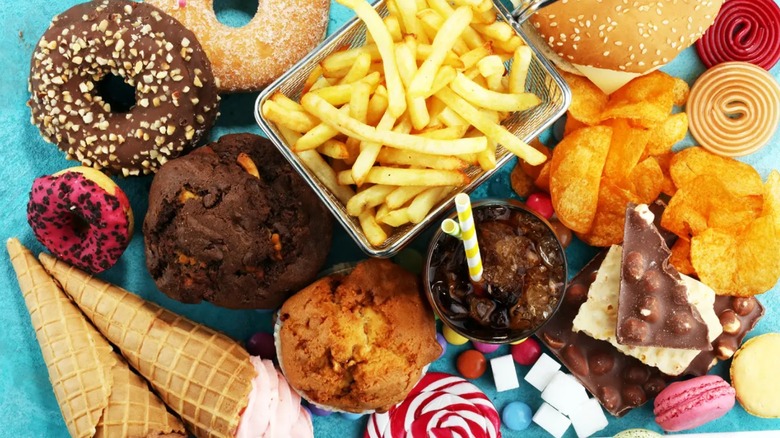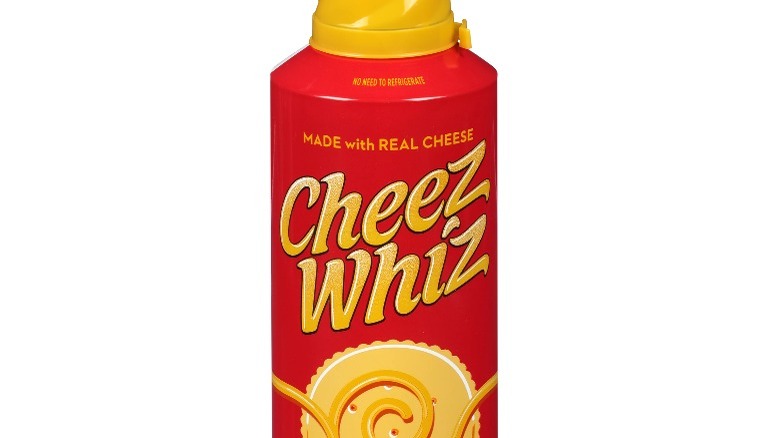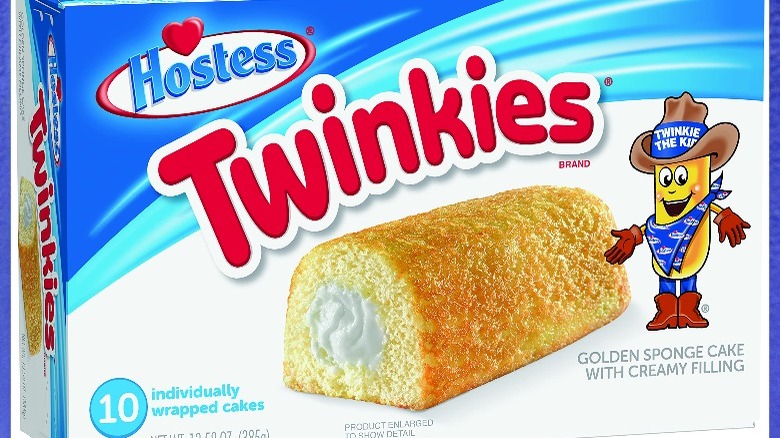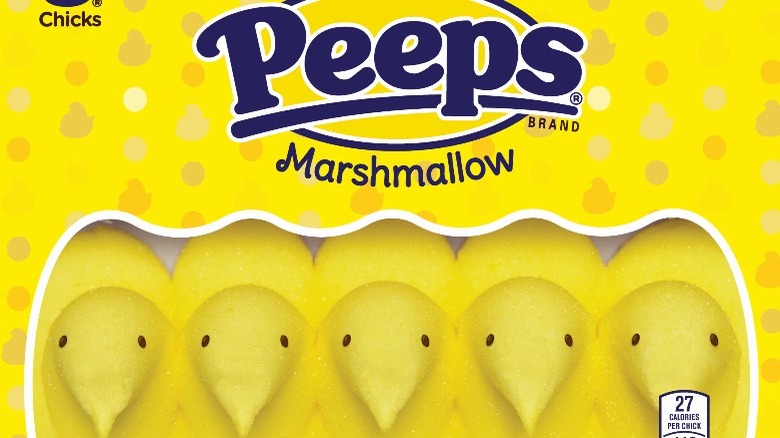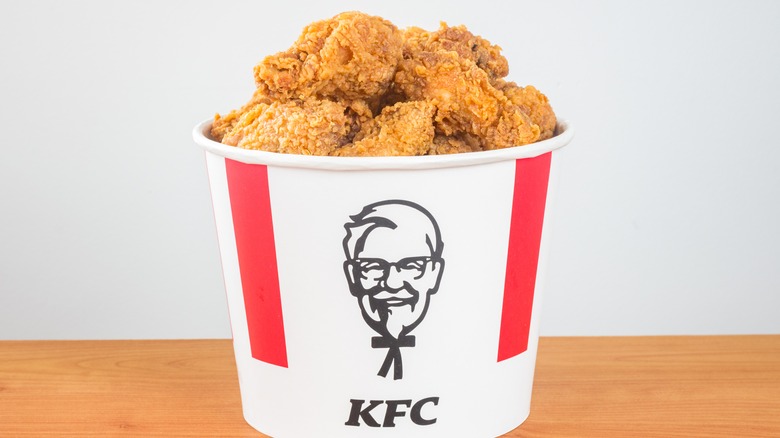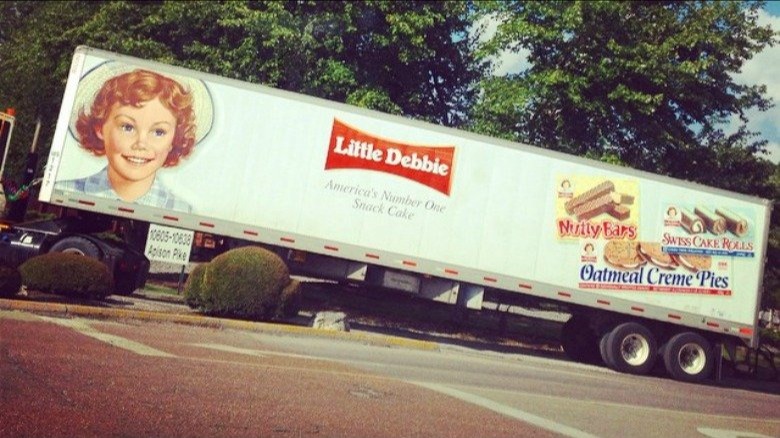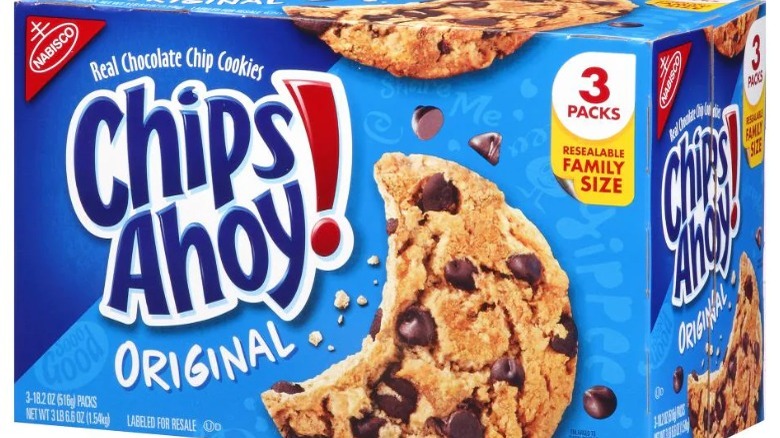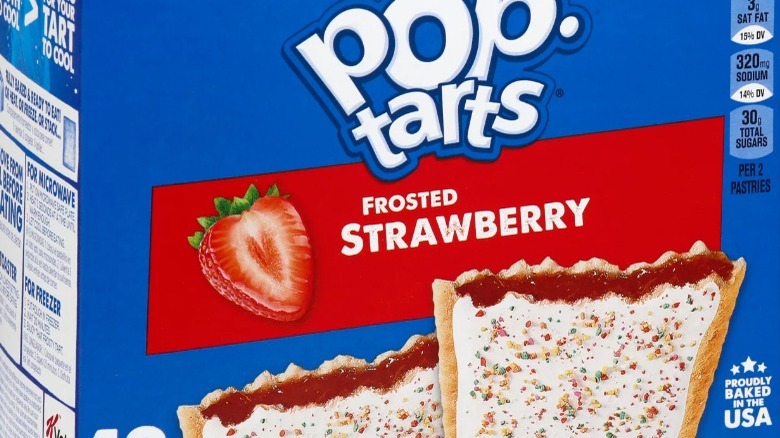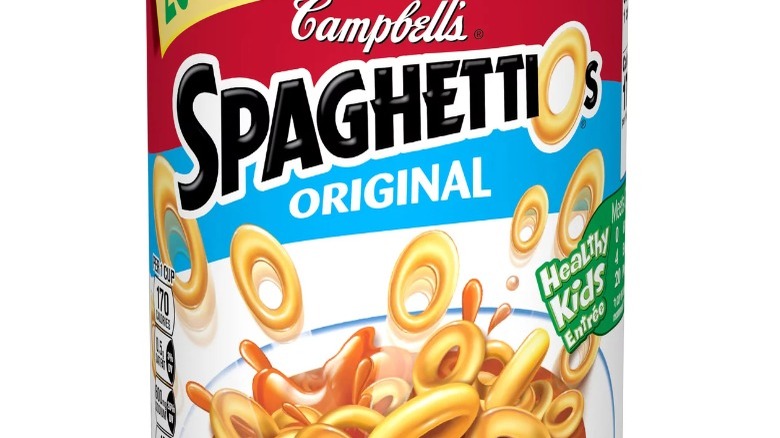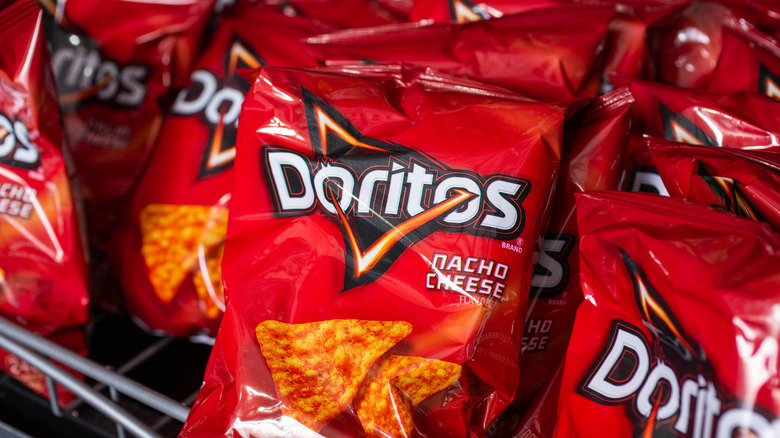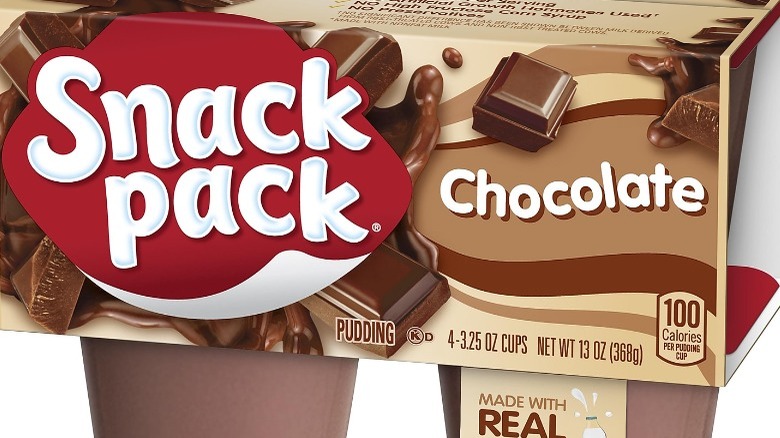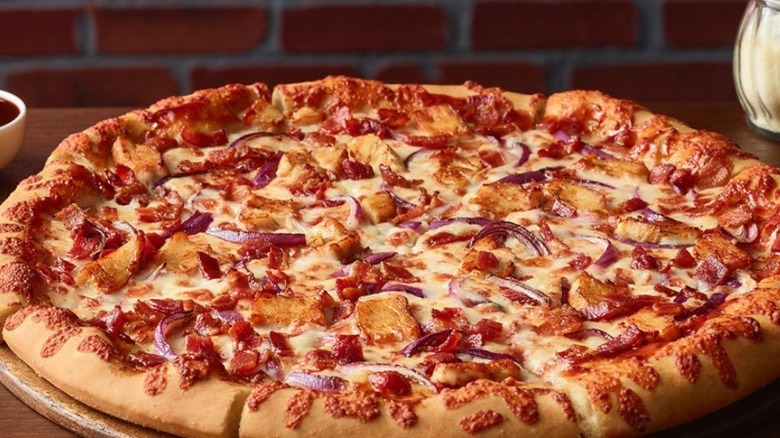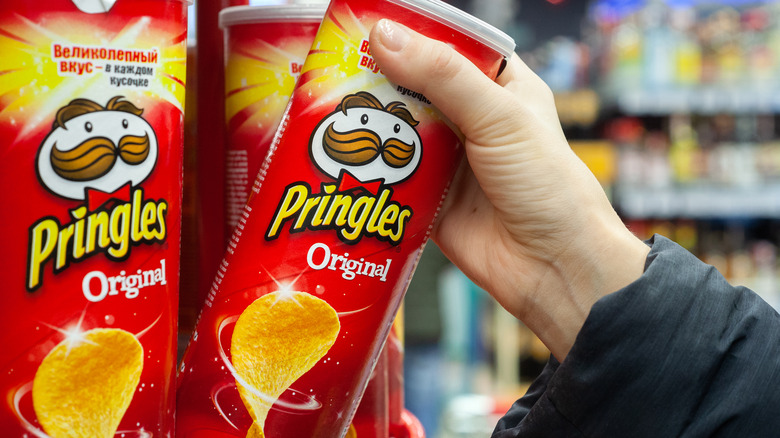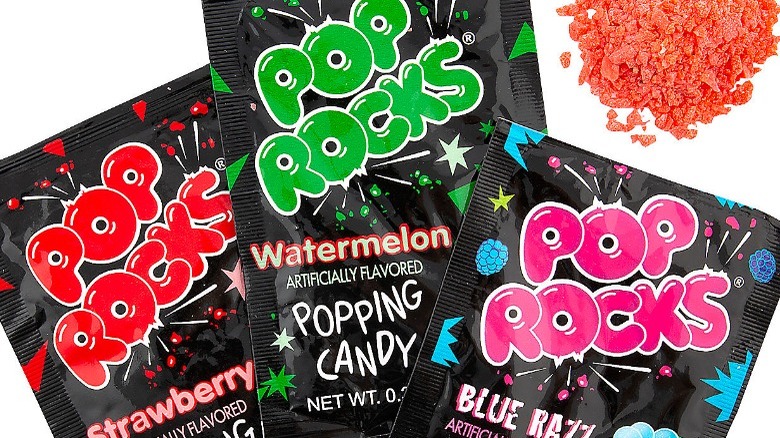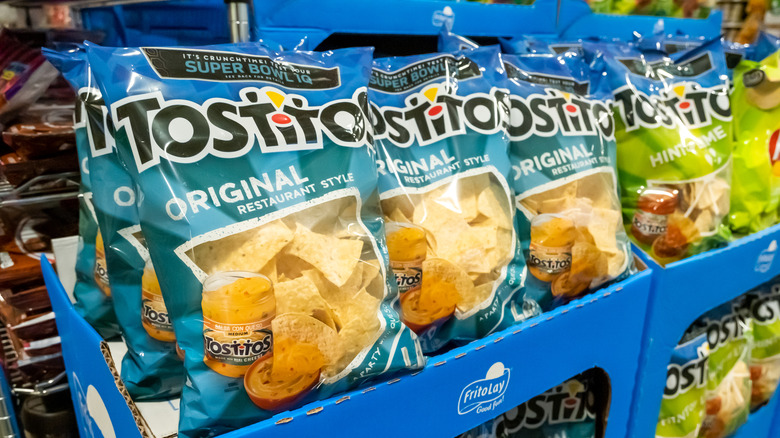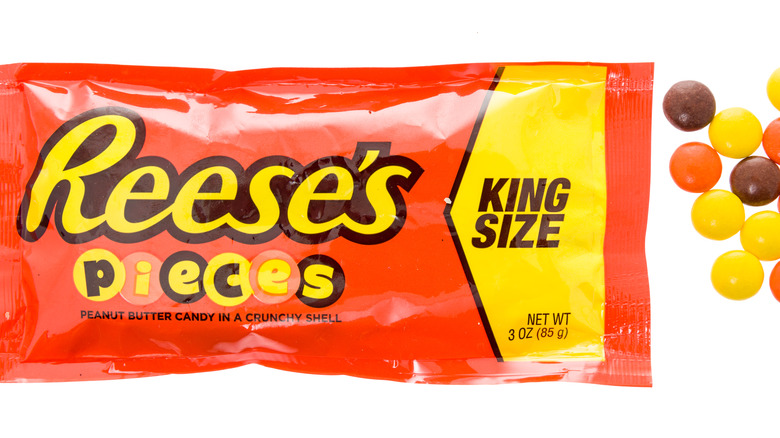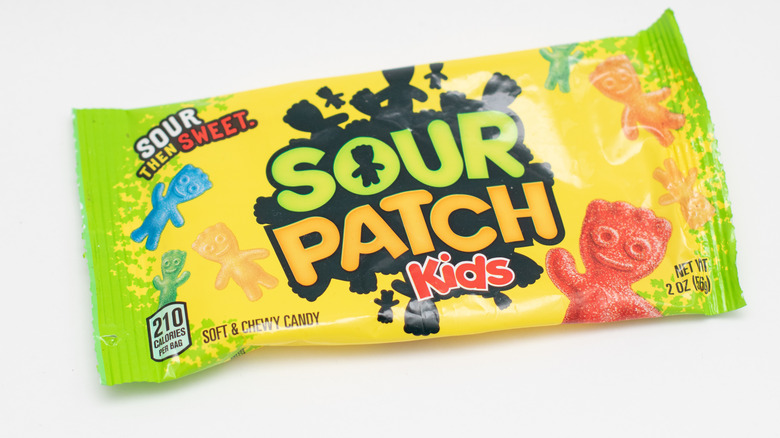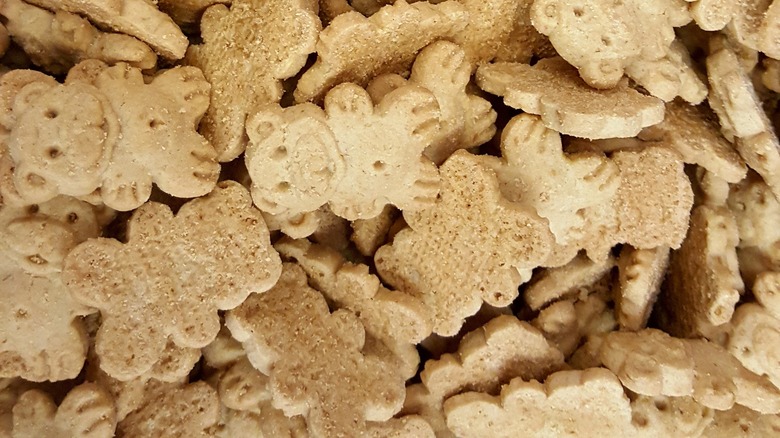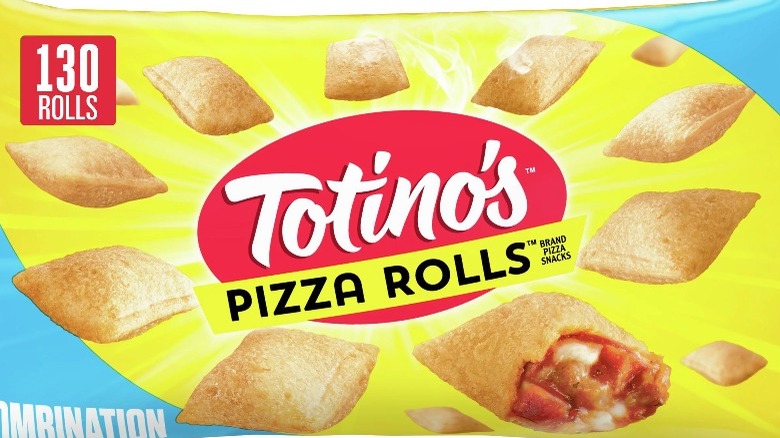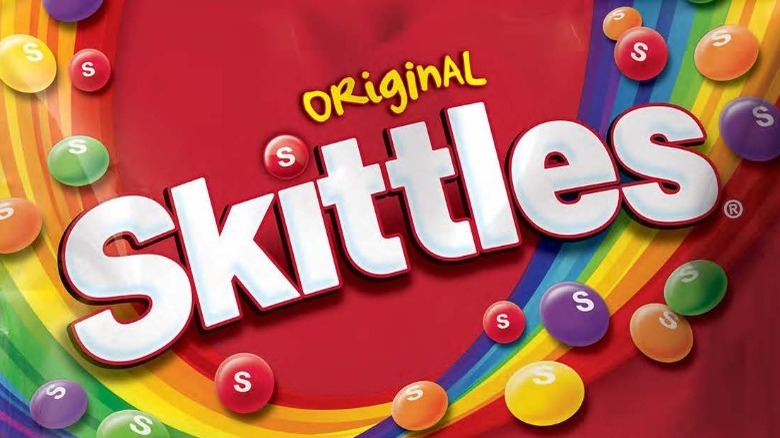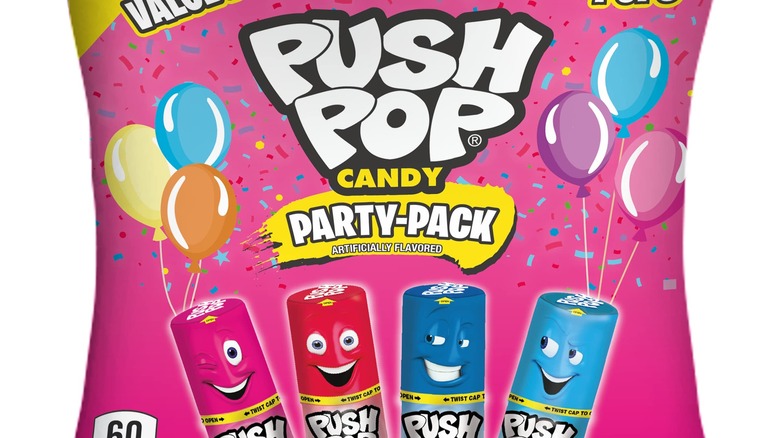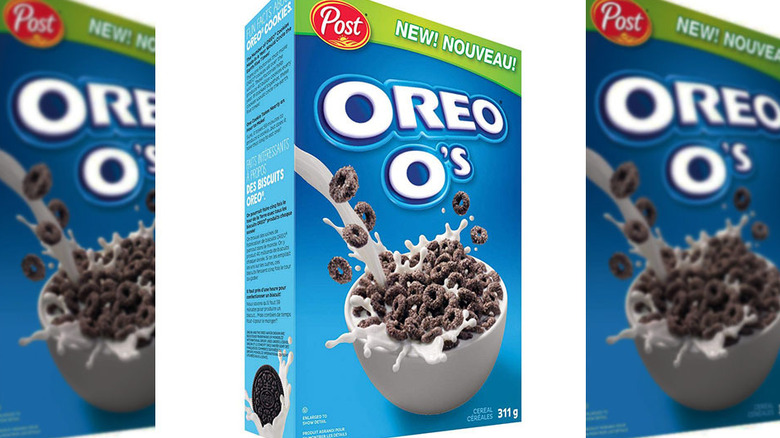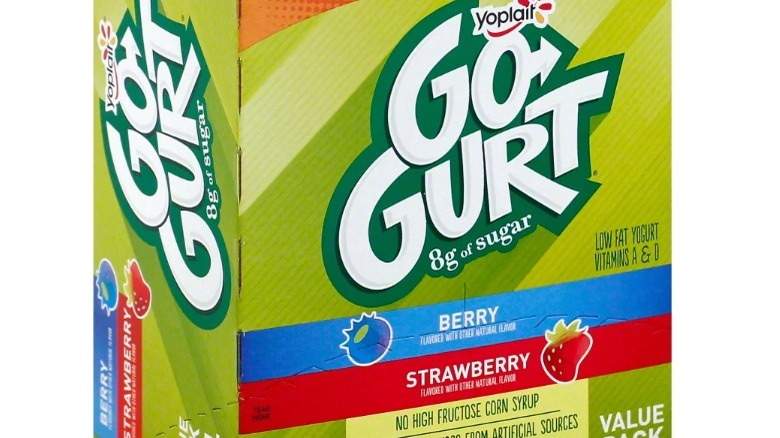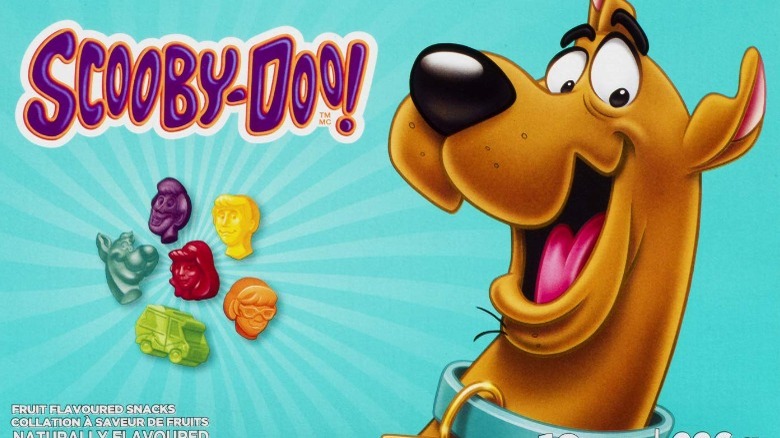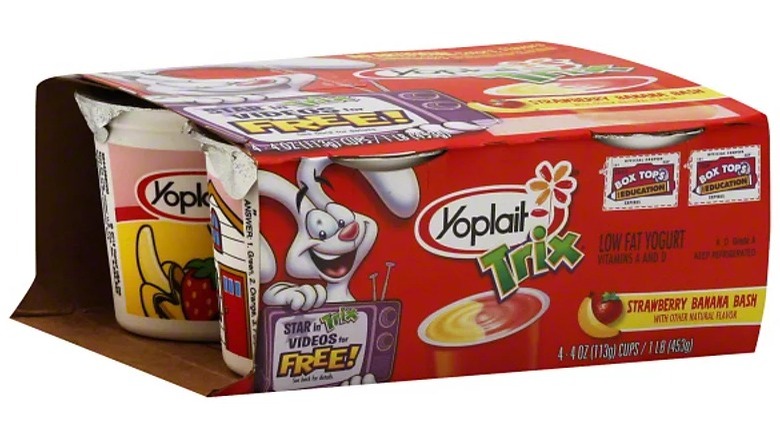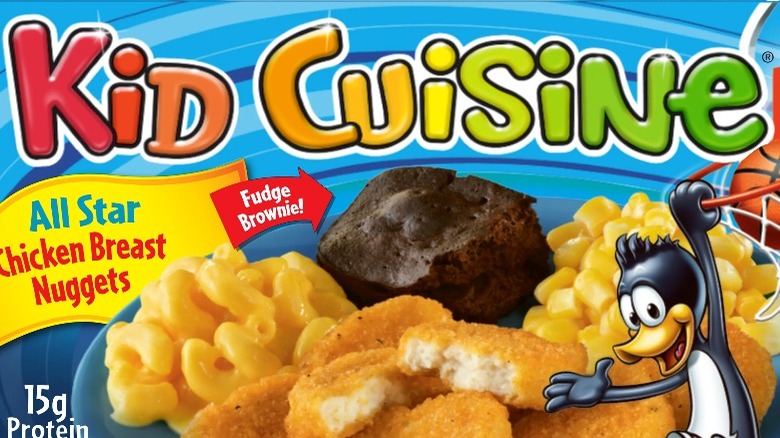The Most Popular Junk Food The Year You Were Born
We may receive a commission on purchases made from links.
Snacks have evolved as much as the people who enjoyed them over the years. From cheese in a can to candy in cereal boxes, one thing is for sure; these snacks provide some serious nostalgia. Did you reach for something in the pantry or race to the nearest drive-thru for your junk food fix as a kid?
Healthy snacks and diet gimmicks surged in popularity in the latter half of the 20th century and into the millennium, so this roundup is all about everything cheesy, chocolatey, and chain fast food restaurants. It's incredible to look back and learn how and when some of these brands took off. And let's be honest, no one cares about the most popular fruit or protein bar from the year they were born.
We rounded up some of the most popular junk foods from the year you were born between the early 1950s and 2005. Get ready to take a trip to the calorie-laden and processed food past; some of these may surprise you. Let's dive in.
1953: Cheese Whiz
When you think of cheese and crackers, you may imagine a trendy cheese board fit for an Instagram story. In 1953, Cheez Whiz on crackers became the norm for a cheese and cracker pairing. This saucy cheese in a can grew to be a grab-and-go snack staple, and according to NPR, Kraft promoted Cheez Whiz as "Cheese treats quick. Spoon it, heat it, spread it."
Two essential items played a role in the growth of Cheez Wiz, convenience and longer shelf life. In post-World War II America, comfort was key, and what better way to save time than staying out of the kitchen and eating cheese out of a can?
1954: Twinkies
Few junk food snacks compare to the timeless favorite, The Twinkie. In 1930, James Dewar felt inspired to fill cakes with a sugar-cream mixture from bakery molds for shortcakes sold during Strawberry season. Thus the golden sponge cake filled with a creamy filling came to be as we know it.
It wasn't until the 1950s when Twinkies' popularity soared as Hostess sponsored the very popular "Howdy Doody Show." The commercial advertisement emphasized how they melt in your mouth like cotton candy, so what kid wouldn't want this in their school lunch?
Who wouldn't want to reach for a Hostess Twinkie between meals or for a delicious dessert with ice cream? The 1950s babies understand the hype.
1955: Peeps Marshmallow
Did you know the candy we know today as Peeps originally had wings? That's right, in 1953, Just Born acquired Rodda Candy Co., which originally made the candy we know today as Peeps, but with an extra addition.
The reason the Peeps of today are sans wings makes a lot more sense when you read the history of this candy. The original Rodda Candy Co. marshmallow chicks required manual squeezing of the marshmallow paste out of pastry tubes, making them more labor-intensive.
In 1955, the brand decided to clip the wings for good, speeding up the process to meet the uptick in demand for the popular marshmallow candy. Peeps caught on in a big way and have stood the test of time, still making an appearance every year around the holidays, especially in Spring.
1956-1959: Kentucky Fried Chicken
The Kentucky Fried Chicken chain restaurant we know and love came from humble beginnings. Founder Colonel Sanders bought a roadside motel in Corbin, Kentucky, and started serving his fried chicken out of it in 1930. The restaurant took off for the next couple of decades until a new freeway junction forced traffic away from the fried chicken restaurant.
It wasn't until 1956, after thinking these road additions would leave his restaurant doomed, Colonel received incredible news. After teaching an old friend his chicken-frying process years before, the friend's business increased because of the chicken (via The New Yorker). Other restaurant owners got word, and ultimately Colonel Sanders resolved to go into the franchise business, bringing cheap, fried chicken to the masses.
1960-1962: Little Debbie
According to the Little Debbie website, the snack got its name from founder O.D. McKee's granddaughter, who he believed would make the perfect face for his delicious treats. In the middle of the Great Depression, O.D. McKee started experimenting with oatmeal cookies in the shop he worked in. After altering the recipe, he took two soft cookies and sandwiched them together with a creme filling. These creme pies grew in popularity and sold for a nickel each.
The McKee baking company started in the early 1950s, but it wasn't until around a decade later, after the McKee family purchased King's bakery and opened a modern manufacturing plant, that they pioneered the family pack, creating a deal for 12-count cakes. Twelve cakes are better and more profitable than one, which brought in a wave of new customers.
1963: Chips Ahoy
Tastes as good as homemade. Chips Ahoy advertised its cookies as such, propelling them in popularity (via Insider). In 1963, Nabisco released their famous homemade tasting cookies, and today they remain the second favorite cookie in the United States behind Oreos. According to The Spokesman-Review, these packaged cookies raked in $619.4 million in sales (per 2017 stats).
Nabisco took inspiration for their cookies from the original Toll House chocolate chip cookie recipe, but it was their promise of tasting homemade with the production and shelf life from a factory that added to their fame.
1964: Pop Tarts
Convenience is everything, and that's why Kellogg chairman William E. LaMothe sought to create a delicious toaster-friendly to-go breakfast option. He partnered with Joe Thompson and created the breakfast hack on toast and jam. They first called it the "fruit scone," which needed help from the marketing department. The brand then took inspiration from pop culture and renamed it "Pop-Tarts."
According to the Pop-Tarts website, in 1964, Pop-Tarts released the original four flavors in Cleveland, Ohio. After the Strawberry, Blueberry, Brown Sugar Cinnamon, and Apple flavors took off, the brand went nationwide in 1965. Whether born in the '60s or the 21st century, Pop-Tarts remain a favorite for kids in the morning.
1965: SpaghettiOs
Did you know SpaghettiOs did so well in product testing with moms and kids that Campbell's made the decision to bypass any regional test marketing and go straight to national distribution? For anyone born in 1965, this product was launched on October 18th of that year (via Campbell's).
Unlike any product before it, SpaghettiOs marketed itself as "The world's first spoonable spaghetti." It grew in popularity immediately after launching. The first SpaghettiOs TV commercial in 1965 sang the original slogan, "The Best Invention Since the Napkin!" If that didn't sell you, we don't know what would.
SpaghettiOs are still enjoyed today in a variety of flavors.
1966-1967: Doritos
The collaboration we never expected: Doritos and Disneyland (via History of Doritos). Not long after Disneyland opened up for business, Frito Lay snack company opened "Casa de Fritos." What better way to expand your brand than opening a storefront at Disneyland?
This Mexican-style restaurant in Disneyland's Frontierland got tortillas from the local tortilla factory Alex Foods. The store realized many tortillas ended up in the trash, so in an effort to save the leftover food, they cut them up and fried them into chips.
By 1966, people everywhere had cheese powder on their fingertips; Doritos were born.
1968-70: Hunt's Snack Pack
Did you grow up licking the metal lid of a Hunt's Snack Pack? These delicious snacks made their debut in 1968 after Hunt-Wesson developed shelf-stable milk pudding.
The snack grew in popularity with the launch of its own mascot, a horse cleverly named Snack Pack. What kid doesn't want to buy pudding endorsed by a cute horse? Parents loved the treats that could last longer than prior launched pudding products.
In the early years of development, the brand advertised to "Open carefully and not handle the lid or inner can rim" for safety reasons. After this, Hunt's replaced the horse with Snack Pack Jack, who endorsed the child-safe lid.
1971: Pizza Hut
Pizza Hut always sets out to push boundaries and create outside of the box, pizza box that is, menu items. Today the chain has more than 16,000 restaurants and 350,000 employees in more than 100 countries. This incredible growth started only in 1958 when the brand opened the first Pizza Hut restaurant in Wichita, Kansas and the brand really hit its stride in the early 1970s.
It was 1971 when Pizza Hut became the number one restaurant chain in the world in both sales and number of restaurants. Take that, Domino's and Papa John's Pizza. (Okay, so Papa John's didn't even exist yet, but still ...)
1972-1973: Pringles
Next on our list, we have Pringles, originally known as Pringles Newfangled Potato Chips, aka the chip of the '70s, according to eHow. In the 1960s, Pringles struggled and the wild success the brand enjoys today was out of reach. According to The New York Times, the brand nearly flopped, but after improving on the recipe, the chip made a crazy comeback. This recipe reconstruction paid off and resulted in Pringles being one of the most popular brands of potato chips in the world today.
According to Funding Universe, Frito Lay sales exceed one billion in this decade. While Doritos contributed to Frito Lay's tremendous success, Pringles made a name for itself during the '70s. The chip remains a favorite today and we understand why; the shape and storage of the chip created a fresh and intact chip every time.
1974-1978: Pop Rocks
Do you remember dumping Pop Rocks in your mouth as a kid to create a tiny tingly explosion on your tongue? In 1974, Pop Rocks made their way to market, and for years after, kids could not get enough of this unique candy concoction. Ask anyone who grew up in the '70s and '80s; they understand the hype.
Pop Rocks' earliest beginnings date back to the 1950s when General Foods chemist William Mitchell experimented with creating an instant soft drink. He told People he sought to create a powder that mixed with water would create a fizzy carbonated drink. This clearly failed and left the chemist with sweet candy bits that would "pop" inside one's mouth. Years later, the candy remains a kid favorite.
1979-1981: Tostitos
Frito-Lay continues to slay with this late '70s, early '80s favorite, Tostitos. We've yet to meet a dip that doesn't taste good with an accompanying Tostitos tortilla chip. According to SnackHistory, Tostitos began finding their way to store shelves in 1978 (other sources put the launch of the crispy rounds around 1979) and continued to grow in popularity for years after.
Tostitos Traditional and Nacho Cheese Flavors hit national distribution after successful test marketing in 1979. By the early 1980s, the flavors went into national distribution with sales numbers that led Frito-Lay to declare it one of the most successful new products the company had ever launched (via PepsiCo).
1982-1984: Reeses Pieces
Phone Home for Reese's Pieces. This bite-sized candy grew in popularity after being featured in the 1982 movie "E.T. the Extra-Terrestrial." The reason this candy landed a major role might surprise you.
In the legendary scene, Elliott lures E.T. with a trail of Reese's Pieces. The candy had yet to become a mainstream hit until the film. M&M was set to be the candy of choice, but Mars Incorporated refused permission to Spielberg.
After the movie's success, Hershey made a deal with production to promote E.T. with $1 million. According to Entertainment Tonight, Reese's Pieces sales jumped 65% after the opening of the sci-fi movie.
1985-1987: Sour Patch Kids
The first bite might be sour, but this candy is certainly sweet after a couple of chews. According to Candy Favorites, Sour Patch Kids grew in popularity when the brand switched the shape from Martians, capitalizing on the space craze of the 1970s, to Cabbage Patch Kids to match the doll's fandom in the '80s. Today's iteration doesn't exactly resemble the chubby-faced dolls in appearance, but nevertheless, the kid shape of the candy stuck.
The candy continues to reign supreme today with its popular tagline, "First they're sour, then they're sweet." Including promotional advertisements of the little kid candy figures committing small acts of hostility before their demeanor changes and they become sweet.
1988: Teddy Grahams
This classic snack took off in the late 1980s. Teddy Grahams launched in 1988 and sold more than $150 million in the first year on the market. They hit the ground running and launched three flavors at once: chocolate, cinnamon, and honey.
After its introduction, Teddy Grahams climbed its way up the snack ladder to become the third most popular cookie on the market. The cute and tasty cookies made record-breaking sales at introduction, securing the title of most popular cookie release in a quarter of a century. Nabsico owns the brand, so this honor is not to be taken lightly
1989-1990: Pizza Rolls
What's better than a bite-sized pizza bite? We're sure the inventors of Totino's Pizza Rolls thought something similar when crafted these delicious rolls. Pizza Rolls make for an easy and savory lunch or dinner, and obviously a perfect snack. While the tiny pizza bites came out in 1968, the brand grew in popularity after Pillsbury bought the rights in 1985 (via The Michigan Daily). Pillsbury trademarked "Pizza Rolls" and the brand took off from there.
With a hint of nostalgia and deliciousness, those who loved the pizza rolls as kids continue to buy them for a late-night snack or quick dinner after a long day at the office. Just about everyone loves pizza, so how can you not have a soft spot for Totino's Pizza Rolls?
1991-1994:Skittles
Skittles first lived across the pond before coming to North America in 1979. It took three years of importing the candy from Britain before Skittles started being manufactured in the United States. This change really propelled the candy's growth in North America.
Compared to all the flavors we know and love today, Skittles only offered grape, orange, strawberry, lemon, and lime flavors at the time. Although the brand gained traction in the early '90s, it wasn't until 1994 that the famous slogan "Taste the Rainbow" made its debut and became one of the longest-running advertising campaigns.
1995-1997: Push Pop
Push Pop made its way to market in 1986 and especially took off in the 1990s. In the mid-90s, you could catch kids rolling down the street with a skateboard beneath their feet and a Push Pop in hand. The 1994 Push Pop commercial propelled the candy further into popularity with an appearance from movie actor Ryan Reynolds.
It was so popular the Triple Power Push Pop variation created a way to lick three flavors at the same time in one push-up. Nothing can compete with the Blue Raspberry, Watermelon, and Strawberry trifecta, as it allowed fans to easily eat one at a time or all three together.
1998: Oreo O's
What's better than cake for breakfast? How about cookies in your cereal? Oreo did just that with the debut of the Oreo O's cereal. The cereal launched in 1998, followed by a decade of success (via Snack History). You can imagine, with Oreos being the most popular cookie in the world, how excited fans got for a cereal version.
A few years later, in 2001, Oreo O's recipe received a makeover to add real cream filling and made the cereal taste like the classic Oreo cookie. Although seemingly well-received, the product vanished from most shelves around 2007, though it has come back since then.
1999-2001: Go Gurt
If you have yet to learn anything from the evolution of American food products, convenience is certainly key. Food Scientists at General Mills in the early '90s clearly felt the same as they set out to prove that yogurt could be put in a tube. After rounds of testing and recipe altering, Go-GURT as we know it hit shelves in 1998 as part of a regional test.
The product was such a hit in school lunch boxes that according to General Mills, Time dubbed it "the fastest-selling yogurt product ever released." The fun continued in 2001 when the brand released Glo-GURT tubes with glow-in-the-dark fortunes and Banana Split and Root Beer Float flavors.
2002-2003: Scooby-Doo Gummies
General Mills first began working on the idea of fruit snacks in 1975, and the treats really took off in the 1990s. A favorite was the Scooby-Doo fruit snacks, released in the late 1990s and getting an added boost when the cartoon "What's New Scooby Doo," premiered in 2002. Kids everywhere could snack on fruity Scooby snacks while watching the cartoon program.
Betty Crocker's Scooby-Doo fruit snacks might just be one of the most iconic and delicious fruit snacks of our time. We might be biased because we're major Scooby-Doo fans, but these Scooby-shaped snacks made snack time incredibly fun as a kid.
2004: Trix Yogurt
Kids and adults alike love Trix Yogurt, which helped it secure our most popular junk food slot in 2004. The brand successfully marketed to multiple generations setting it apart from other snacks and food products.
The brand kicked off as a lunchbox favorite in the 90s. Then Trix held special contests in 1995, 1996, 1997, and 2004 to find the "Silliest Kid in America," which kept the brand on TV screens and in the hearts and minds of kids looking to be affiliated with the brand.
2005: Kid Cuisine
Kid Cuisine moved units by bridging the gap between parents and kids at mealtime. These easy meals sought to make dinner fun with animal-shaped nuggets, mac and cheese, and dessert offerings. In the early 2000s, kids knew a good meal was coming when they saw that signature blue dinner tray.
Kid Cuisine's marketing tactics even landed them a feature in the book "Marketing to the New Super Consumer: Mom & Kid." Published in 2005, it aimed to show how marketing affects mothers' buying behaviors. A year later, Kid Cuisine landed itself in another literary creation, the book, "Food Marketing to Children and Youth: Threat or Opportunity?". While the brand wasn't exactly healthy in its earlier iterations, Congra Brands moved to make it more nutritious in 2005.
